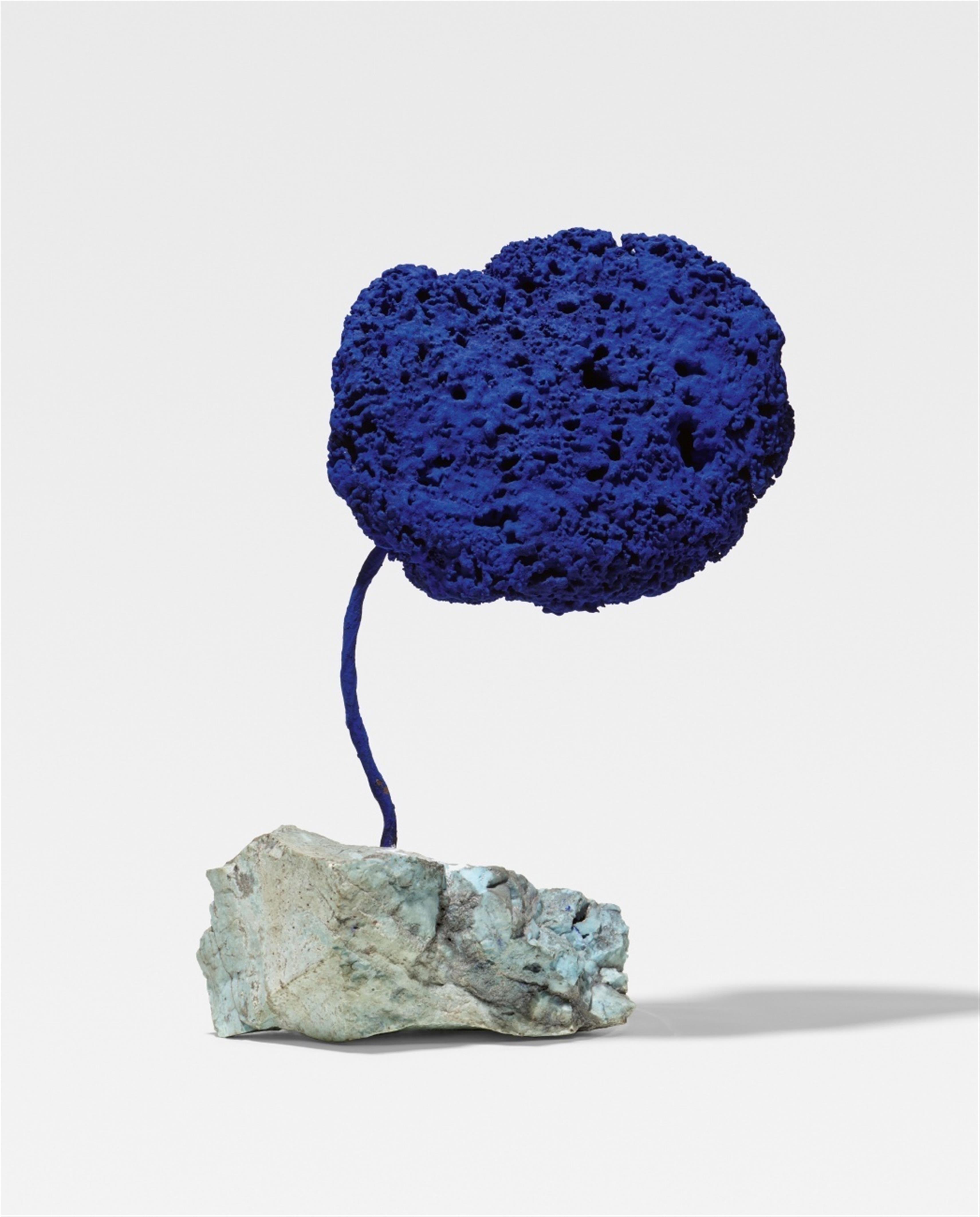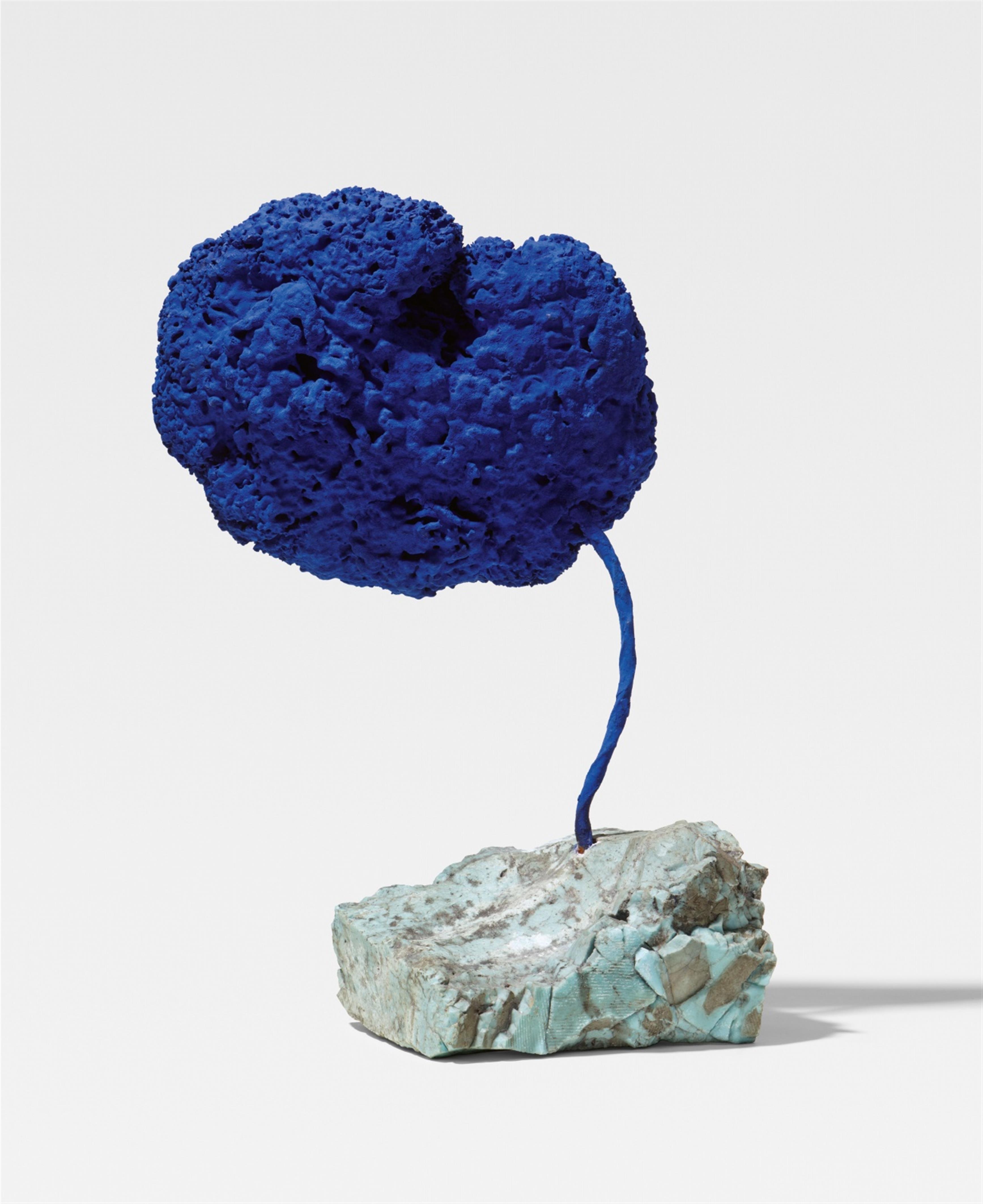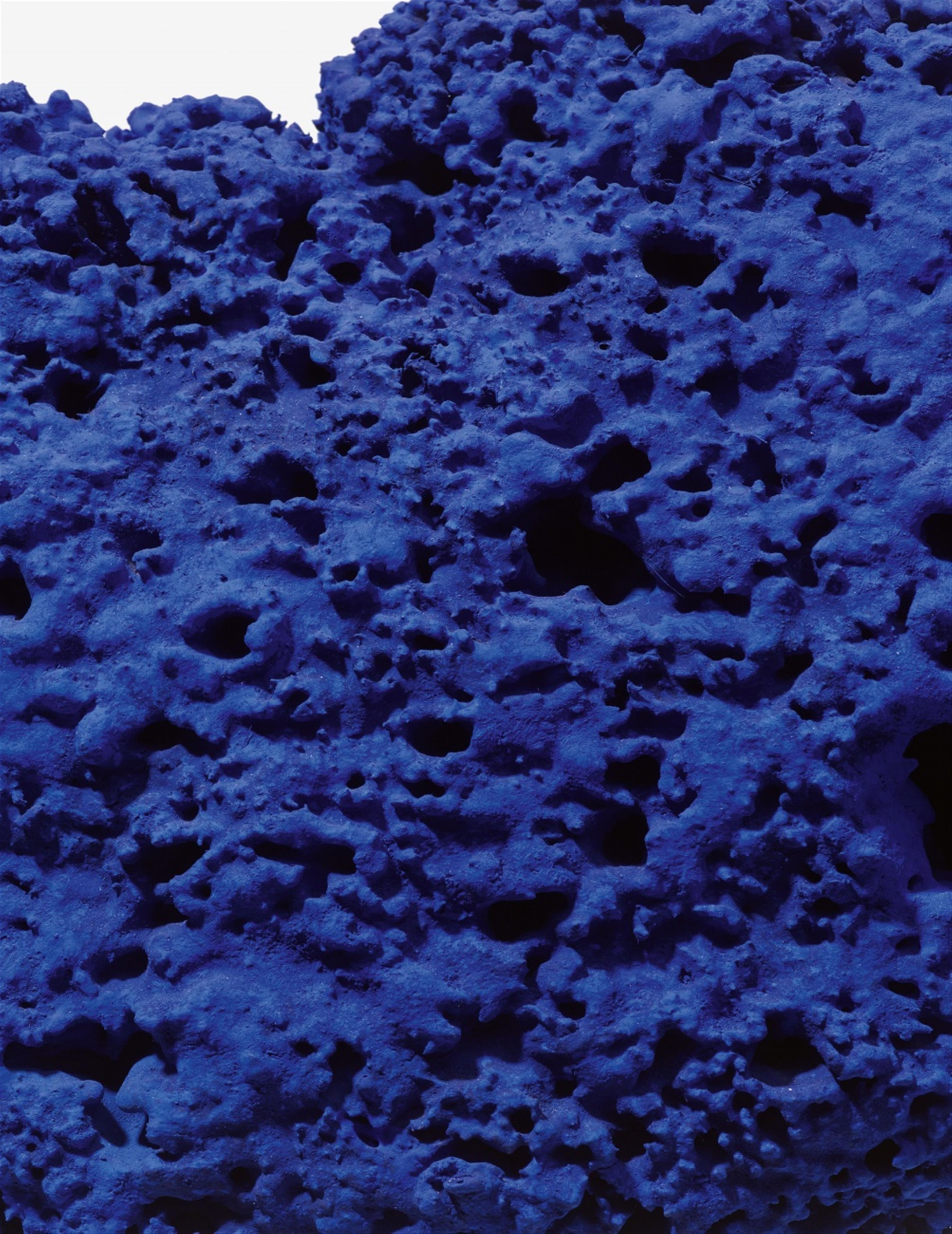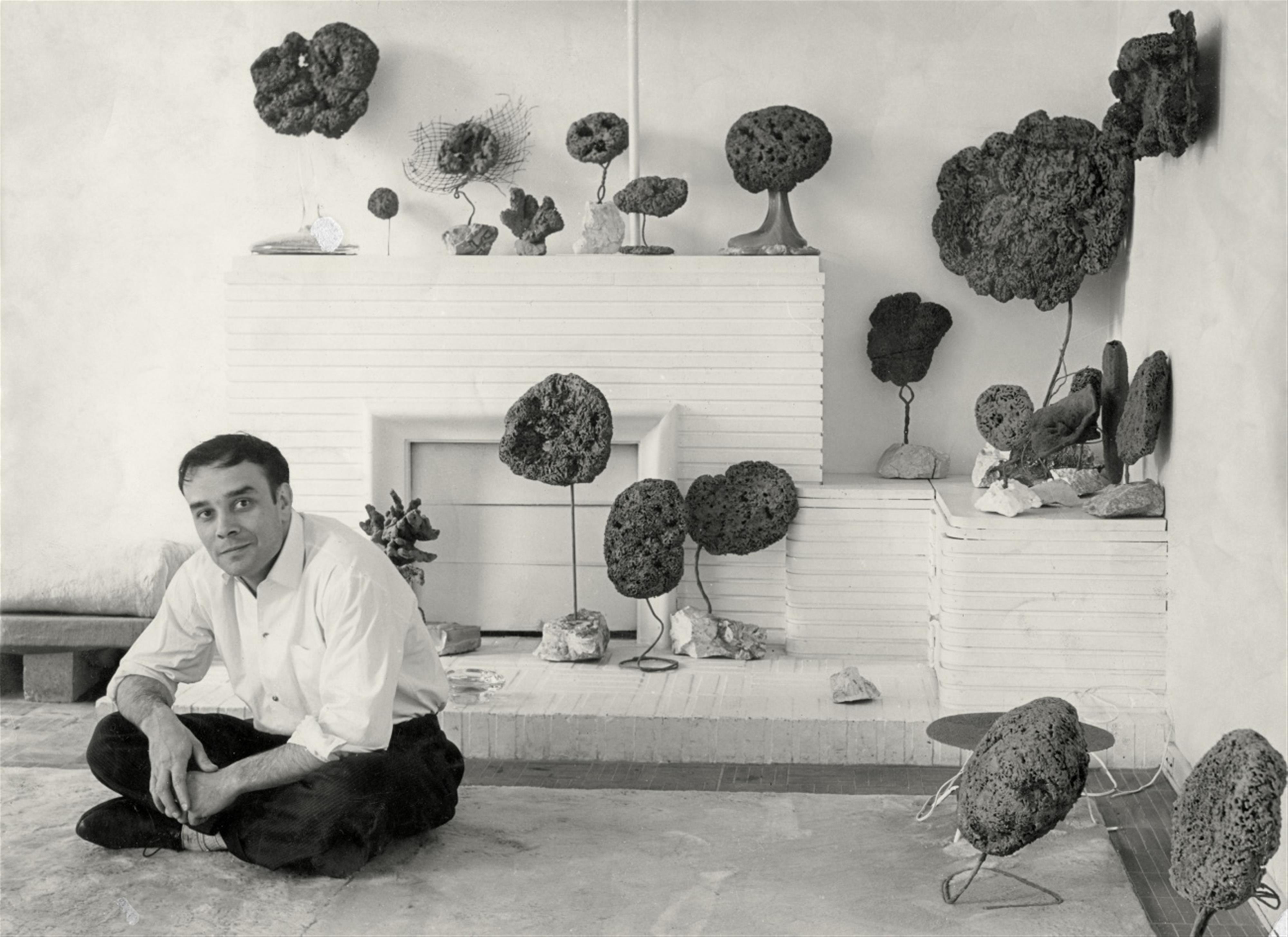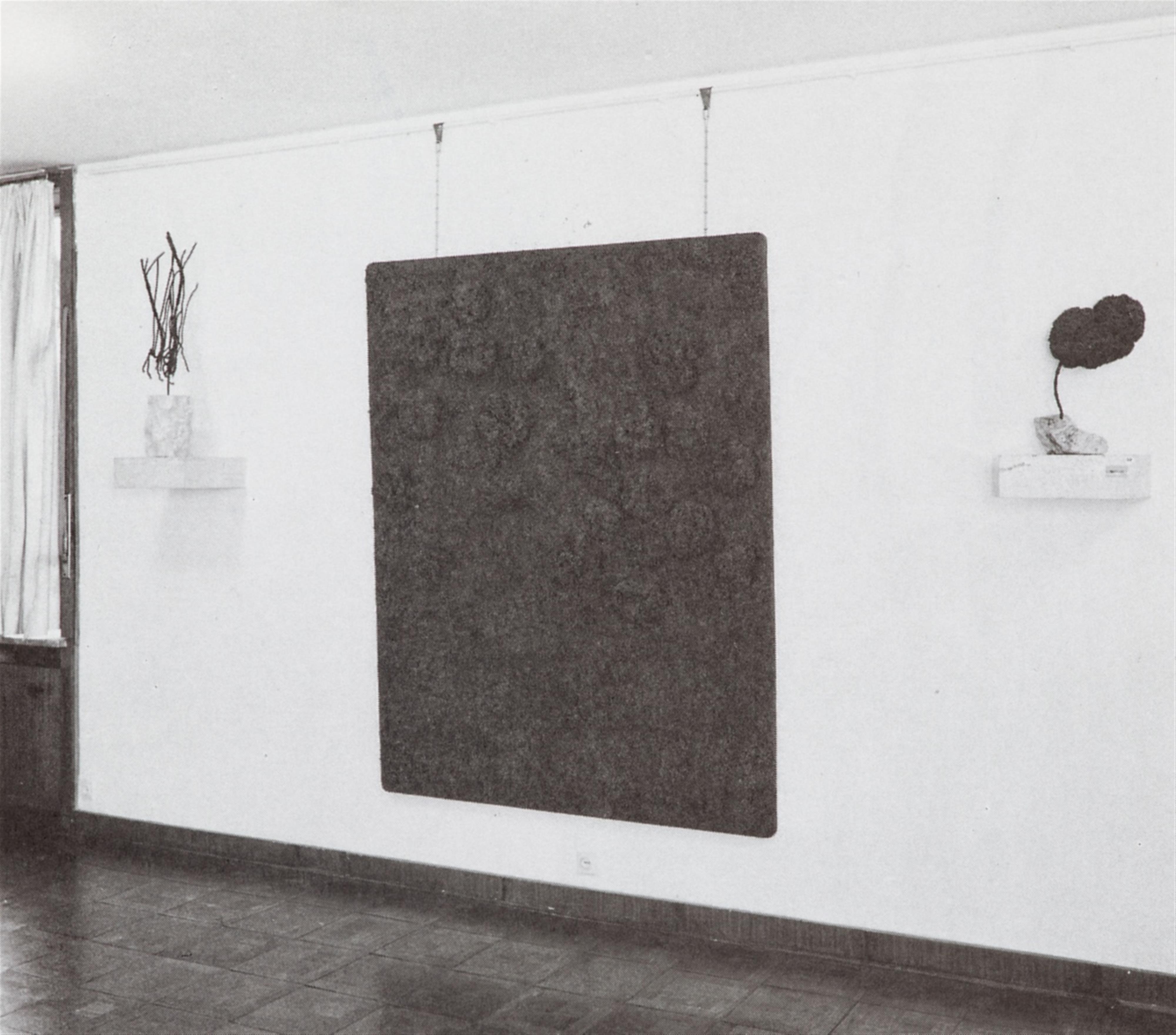Yves Klein
Sculpture éponge bleue sans titre, (SE 328)
Around 1959
Pigment and synthetic resin on natural sponge with metal rod and stone base. Total approx. 50.5 x 36 x 8 cm. - Minor traces of age.
In 1961, Paul Wember, the director of the avant-garde Krefeld Museum's Haus Lange, initiated a large survey show of Yves Klein, which the artist himself conceived as a complete artwork. In this now legendary exhibition, the present work was presented in the Blaue Zone, a room filled solely with monochrome blue pictures and sponge sculptures. In his exhibition review, John Anthony Thwaites described overwhelmingly the intense spatial effect: “When one enters the first large space of the Museum Haus Lange in Krefeld, where Yves Klein is now exhibiting, you think you are back on the Mediterranean. Large blue pictures surround us, identical in tone and format. They hang alongside sponge reliefs and sponge sculptures. Everything is just blue […] The impression of vastness is in the room, and with it, what G.K. Chesterton called “the terrible tidiness of the sea”. But already this first conceptual connection is no longer sufficient - because something ceremonial is added. Something for which the wonderful interior space of Mies van der Rohe is actually too real. One wants to extend it, to stretch out the blue series as far as the eye can see. And a cortège [procession] in blue robes must pass by. A sound must be droning from somewhere … But where are we thinking?” (quoted after: Julian Heynen (ed.), Yves Klein Monochrome und Feuer, Ein Dokument der Avantgarde, exhib.cat., Museum Haus Lange and Haus Esters, Krefeld 1994, p. 16).
Pure colour as an expression of spiritual purity and primitiveness, evoking a floating, ceremonially enraptured atmosphere - that is exactly what Yves Klein strove for with uncompromising radicality. Klein rejected everything representational and compositional as disruptive and traditional. Colour should represent only itself in complete monochromy, and become the mark of the spiritual, the incomprehensible. The intense blue, in particular, as the colour of the sky and the primary elements of water, fire and air had fascinated the artist since his childhood and continued to captivate him in his artistic progress to a special degree. His artistic work was founded less on intellectual theory, but rather fed on intuition and a religiously as well as romantically inspired world of ideas. The search for a uniform blue tone of the highest luminosity which had the intensity of pure pigment without being optically distorted by the addition of common binding agents, led to the development of his own blue, a deep ultramarine, which he patented as “I.K.B. (International Klein Blue)” and from then on became his permanent identification element. Alongside monochrome panel pictures in IKB blue, Klein found an artistic material in sponges that conveyed his aspirations most effectively. As a natural product with an individual anthropomorphic form, the sponge allowed for a variety of associations; moreover, its physiological properties predestine it to be impregnated with paint, which it literally sucks up. “The sponge also is a manifestation of the atmosphere; in itself round and naturally saturated with water, Yves Klein steeped it in blue as an expression of cosmic sensibility.” (Paul Wember, Yves Klein, Cologne 1969, p. 16).
The prominent sponge sculpture offered here can be considered exemplary for the work of Yves Klein - the versatile, radical artist who broke with modernity with his intensive work, and opened up completely new perspectives for contemporary art.
Certificate
With accompanying confirmation from R.U.K., Paris, via email dated 25.02.2021.
Provenance
Collection Hanns Hülsberg, Hagen; private collection, North Rhine-Westphalia
Literature
Julian Heynen (ed.), Yves Klein Monochrome und Feuer, Ein Dokument der Avantgarde, exhib.cat. Museen Haus Lange und Haus Esters; Krefeld 1994, cat.no.44, S. 23 with installation views
Exhibitions
Krefeld 1961 (Museum Haus Lange), Yves Klein Monochrome und Feuer, exhib.cat.no.44

